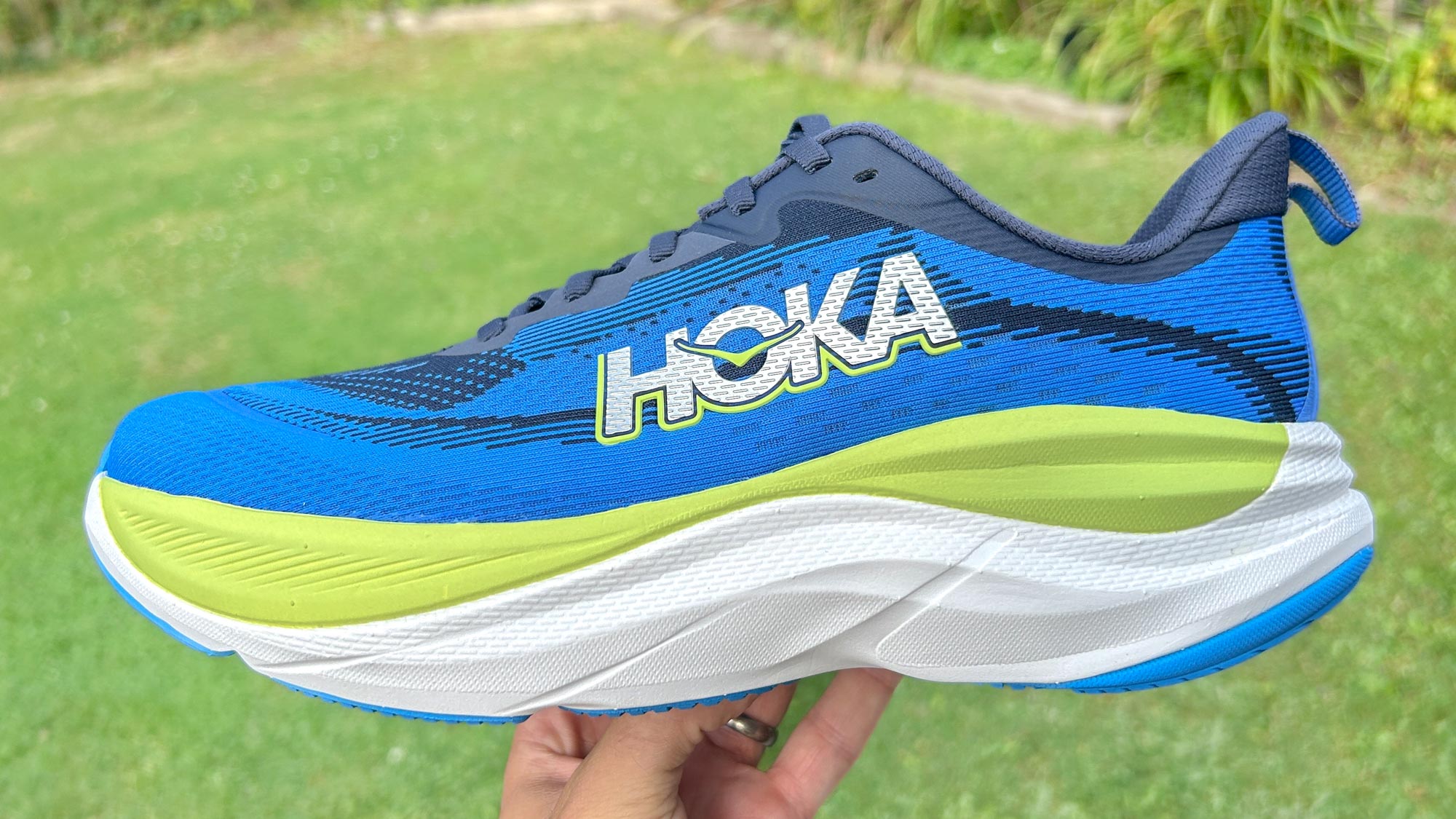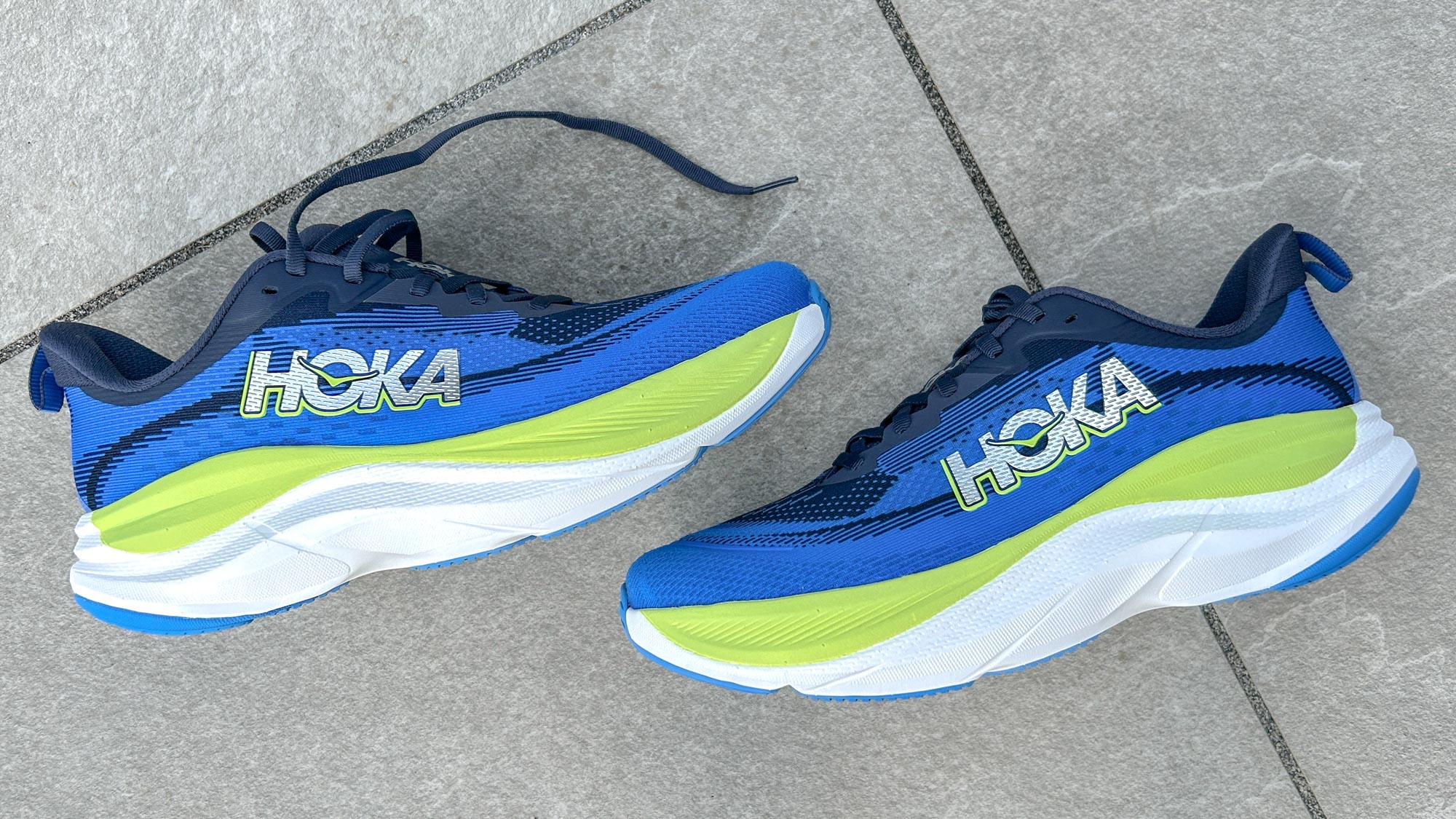
The Hoka Skyflow is a new cushioned shoe from the brand that offers an upgrade on the ride you get from the Hoka Clifton 9 or Hoka Bondi 8, and more protection and cushioning than you get from the Hoka Mach 6.
I found the Skyflow one of the best running shoes I’ve tested this year, with a comfortable ride for daily training that’s versatile enough to use the shoe for some faster runs as well. It’s not as soft as some cushioned shoes, like the Saucony Hurricane 24 or New Balance 1080v14, but it’s still comfortable and the stiffer, firmer ride makes it better for faster runs.
In my Hoka Skyflow review I’ll explain why it’s my favorite cushioned Hoka shoe ahead of the Clifton 9, and what kind of runner it will suit best.
Hoka Skyflow review: price and availability
The Hoka Skyflow launched in August 2024 and costs $160 in the U.S. and £150 in the U.K., making it a little more expensive than the Hoka Clifton 9 and some other rival daily trainers, like the Asics Novablast 4 and Nike Pegasus 41. The price is in line with other premium cushioned shoes though, like the Brooks Glycerin 21 or Saucony Triumph 22.
Hoka Skyflow review: design and fit

The Hoka Skyflow is currently available in five colors for both the men’s and women’s shoe, including the varsity navy/electric cobalt design I tested. It’s also available in two widths, which is welcome as the standard shoe does have quite a narrow design, like many Hoka shoes.
I have a narrow foot and found the Skyflow fit me well in my normal running shoe size, but if you do have a wider foot then I’d definitely opt for the wide version of the shoe, which is available in two colors.
The Skyflow is a little more cushioned than the Clifton, standing 40mm tall at the heel and 35mm at the forefoot in the men’s shoe, and 37mm at the heel and 32mm at the forefoot in the women’s shoe. Like most Hoka shoes it has a 5mm drop, and it weighs 10oz in a men’s US 9.5, which is fairly light for a max-cushioned shoe.
Upper

The Hoka Skyflow has a creel jacquard upper with a lot of padding on the tongue and around the heel of the shoe to make it more comfortable. It’s not the most breathable upper, so if you run in hot conditions a lot you might notice it in a negative way, but I found it comfortable and that it held my foot securely on the run without rubbing or causing any irritation.
Midsole
The midsole foam in the Skyflow is a supercritical EVA, which is lighter and more responsive that the traditional EVA materials used in other cushioned Hoka shoes like the Bondi and Clifton. It’s not a very soft foam, but comfortable, and the slight stiffness in the midsole combined with Hoka’s rocker profile makes the transition from heel-to-toe nice and smooth.
Outsole

The Skyflow uses a high abrasion rubber for its outsole, and while there is a large section of exposed foam around the midfoot, the main impact areas on the heel and forefoot are covered. I found that the shoe gripped well for me in wet conditions, and there’s no sign of wear and tear on the rubber after 50 miles.
Hoka Skyflow review: running performance

I am a big fan of the Hoka Mach 6, which, like the Skyflow, has a supercritical EVA midsole but is mainly designed to be used for faster training sessions. I like the Mach 6 for easy runs too, but was hoping the Skyflow would deliver a similar feel, but with more cushioning and protection for easy and long runs.
That’s exactly what it does. The Skyflow is not as squishy and soft as some shoes, but it’s comfortable for any length of run, and has the same happy knack as the Mach 6 of disappearing on the foot during runs. It just lets you get on with your run without feeling intrusive.
The rocker on the shoe and the firmer feel to the foam compared with other max-cushioned shoes means that you move smoothly through your footstrike, and the foam is responsive enough that it felt good to run at faster paces in. I wouldn’t pick it as a shoe for interval sessions or races myself, preferring lighter options, but it can handle tempo and progression runs well, along with your easy miles.
Out of the box the midsole has quite a stiff feel, but this eased up for me after 20 miles or so. It’s still not as soft and flexible as other shoes, but the stiffness isn’t to the Skyflow’s detriment, because I found it helps to speed up the transition from heel to toe.
As a cushioned daily trainer the Skyflow does a great job, offering a blend of comfort and versatility that will make it a good choice for runners of all levels. Beginners will find the Skyflow a protective shoe for all their runs, while more experienced runners who have a shoe rotation will find it a comfortable option for easy miles and long runs.
It’s also a comfortable shoe for walking I found, though not the most stylish option for general use in my opinion.
Should you buy the Hoka Skyflow?
The Hoka Skyflow is a great cushioned daily trainer and one that will work well for a wide range of runners. It’s not a shoe that wows you from the off, but a reliable option that will win your affection over months of regular use. It’s more versatile and enjoyable to run in than the Hoka Clifton 9 for me, though the Clifton remains a good option that’s a little cheaper, and I much prefer the Skyflow to the clunky Bondi 8.
There are some strong alternatives available from other brands, with the Asics Novablast 4 and Saucony Ride 17 being similarly comfortable and versatile shoes that are a little cheaper than the Skyflow. I prefer the Hoka myself, but that’s mostly down to my preference for a rockered shoe, and the Ride and Novabast are equally good in terms of performance.
If you prefer a higher drop shoe the Puma Velocity Nitro 3 and Nike Pegasus 41 are also good alternatives, and the Puma in particular is considerably cheaper than the Skyflow. If you’re looking for a softer shoe to mainly use for easy runs, then the Saucony Hurricane 24 would be a better pick, and the New Balance 1080v14 also has a plusher ride.







